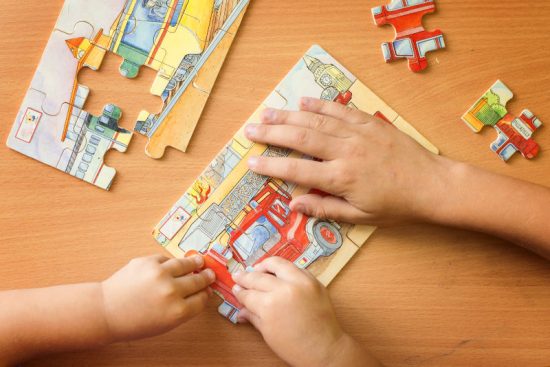 In a fast-paced world dominated by screens, deadlines, and noise, finding a moment of inner calm is more valuable than ever. Many people are turning to creative outlets as a way to unplug and reconnect with themselves. Art and craft activities, often dismissed as mere hobbies, are now being recognized for their powerful mental health benefits. From reducing anxiety to improving focus and emotional expression, the healing power of art is both accessible and profound.
In a fast-paced world dominated by screens, deadlines, and noise, finding a moment of inner calm is more valuable than ever. Many people are turning to creative outlets as a way to unplug and reconnect with themselves. Art and craft activities, often dismissed as mere hobbies, are now being recognized for their powerful mental health benefits. From reducing anxiety to improving focus and emotional expression, the healing power of art is both accessible and profound.
One of the beautiful aspects of creative therapy is that it’s personal and flexible—it doesn’t require formal training or expensive tools. Whether you’re painting, weaving, or molding clay, the goal is self-expression and mindfulness. Adding calming elements to your routine, such as herbal tea, calming music, or a few drops of CBD Tincture, can further enhance the relaxing atmosphere. This blend of mindful activity and supportive supplements can create a truly holistic healing experience.
Why Art Is Healing
Art engages both the body and the mind. Unlike passive activities like watching TV, creating something with your hands stimulates multiple areas of the brain, including those linked to emotions and problem-solving. Here are a few scientifically-backed reasons why art is so effective as therapy:
- Stress Relief: Engaging in creative tasks reduces cortisol, the body’s primary stress hormone.
- Enhanced Focus and Flow: Crafting helps you enter a “flow state,” a mental zone of complete immersion, which is associated with improved mood and reduced anxiety.
- Self-Expression: Art allows people to express emotions that might be hard to verbalize, particularly in times of grief, depression, or trauma.
- Improved Confidence: Completing a creative project, no matter how small, can boost your self-esteem and sense of achievement.
Therapeutic Crafts to Try at Home
You don’t need to visit an art studio or buy expensive supplies to experience the benefits of therapeutic crafting. Below are several beginner-friendly ideas you can try in the comfort of your home.
1. Mandala Drawing
Mandala drawing, the act of creating circular, symmetrical designs, has roots in spiritual practices across the world. Drawing or coloring mandalas can be incredibly meditative. All you need is a sketchbook, compass (optional), and colored pencils or markers. As you work, focus on your breath and let your patterns unfold naturally.
2. Collage Art Journaling
Combine words, pictures, and textures in a visual diary. Cut out images from magazines, glue them into a notebook, and add drawings or quotes that reflect your feelings. This form of journaling encourages reflection and allows for cathartic emotional release.
3. Clay Modeling
Working with clay has a grounding, tactile quality that connects you with the present moment. Try hand-building simple figures, bowls, or abstract shapes with air-dry clay. The physical motion of shaping clay can help release tension in the body and mind.
4. Macramé and Fiber Crafts
Macramé, weaving, and knitting are rhythmic and repetitive, making them excellent crafts for easing anxiety. Start with a small wall hanging or a simple plant holder. The satisfaction of creating something beautiful and functional adds an extra emotional reward.
5. Watercolor Painting
Watercolors are forgiving and fun. Letting the paint flow naturally across the paper mimics the concept of “letting go,” which is therapeutic for perfectionists or those dealing with high stress. Don’t worry about the result—enjoy the process.
Creating the Right Atmosphere
To make the most of your therapeutic crafting, your environment matters. Here are a few tips to help you set the stage:
- Lighting: Natural light or soft lamps are ideal for creating a cozy, calming space.
- Aromatherapy: Use essential oils or natural candles to enhance relaxation.
- Sound: Play instrumental or ambient music to support concentration and calm.
- Comfort: Make sure your space is free of clutter and physically comfortable.
Incorporating calming aids like a cup of herbal tea or a few drops of CBD tincture under the tongue can deepen your relaxation. Many users report that CBD helps them stay present, reduces physical tension, and encourages a state of calm ideal for crafting.
Art Therapy vs. Therapeutic Art
While both offer benefits, it’s important to distinguish between clinical art therapy and therapeutic crafting. Art therapy is facilitated by a licensed professional and often involves structured goals related to mental health treatment. Therapeutic art, on the other hand, is self-guided and focused on wellness rather than diagnosis or recovery.
If you’re struggling with a serious emotional issue, a certified art therapist may provide more targeted support. But for general stress relief and emotional well-being, at-home art and crafts can be immensely beneficial.
Final Thoughts
The healing power of art lies in its simplicity and accessibility. You don’t need to be an artist to benefit from it—you just need to be willing to explore. In today’s hyper-connected world, carving out time for creative expression can be a powerful act of self-care. Whether you’re painting quietly on a Sunday afternoon, making a collage while listening to music, or knotting macramé while sipping calming tea, you are investing in your own well-being.
So gather your supplies, clear a little space, and allow yourself to play. Your mind—and your heart—will thank you.




